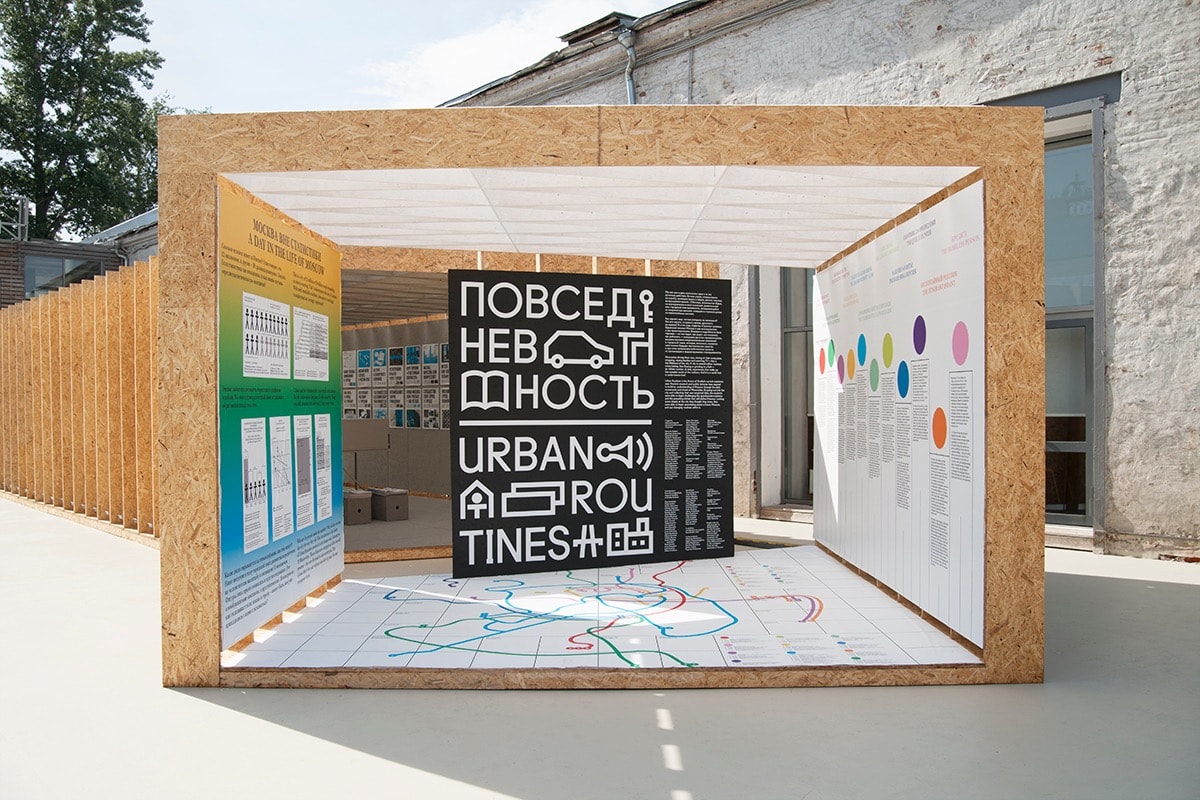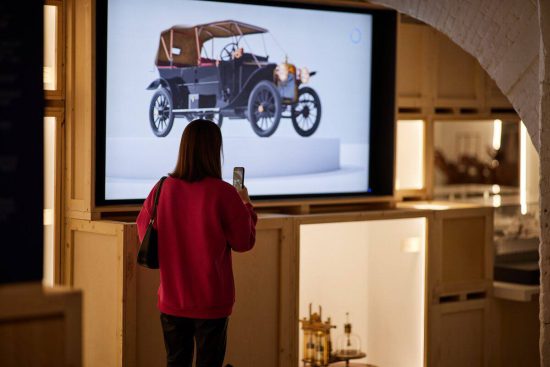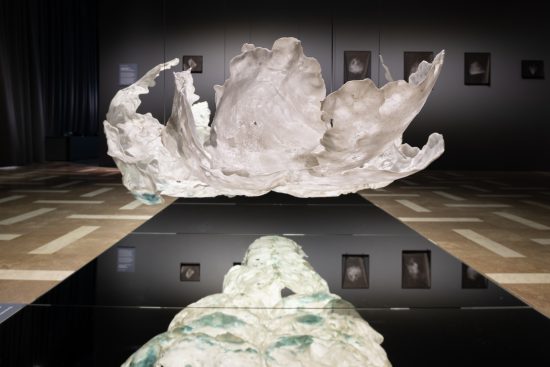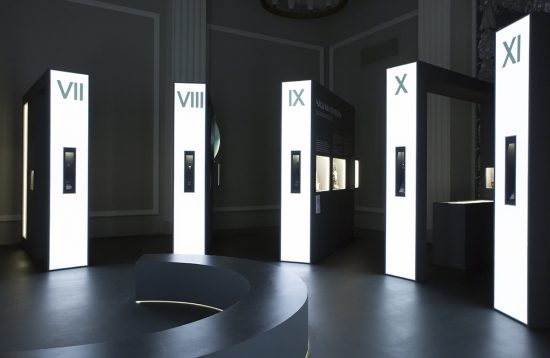The pavilion was designed by Mel Studio for the final student exhibition in the yard of Strelka Institute of media, architecture and design, on the territory of the former Red October factory.
The main task for us was to create a temporary, quickly build and permeable structure, providing comfortable conditions for the exhibition and having a pronounced architectural character. It was necessary to save most of the yard space for lectures during the exhibition, which determined the elongated shape of the pavilion, located along the long side of the site.
The pavilion is divided into three parts according to the structure of the exhibition. The introductory block, where the main theses, information about the participants and info-graphics are located, is slightly rotated and oriented to the entrance to the courtyard, inviting visitors. Behind it is the exhibition space. Closes the structure of the reading corner, where you can get acquainted with the works of students made during the year and the publications of the Institute. The whole structure at the same time, though, and generates a linear movement of visitors, permeable in either direction.
Due to the limited budget and time, we decided to make a simple and functional spatial structure made entirely of a single material. Frequent edges of OSB form the outside of the characteristic surface of the facades and are simultaneously the bearing element of the walls. The ribbed roof with a translucent coating provides the exhibition space inside with natural diffused lighting. At night, the triangular segments of the ceiling are illuminated, which gives an interesting perception of the pavilion roof from the nearby amphitheater. Between the edges on the facades installed led spotlights, emphasizing the structural structure in the dark.
The pavilion thus, in addition to its main exhibition function, serves as a kind of architectural background for the events taking place in the courtyard of the Institute during the exhibition and forms a distinctive open public space












Photos: Gleb Leonov / Strelka Institute






